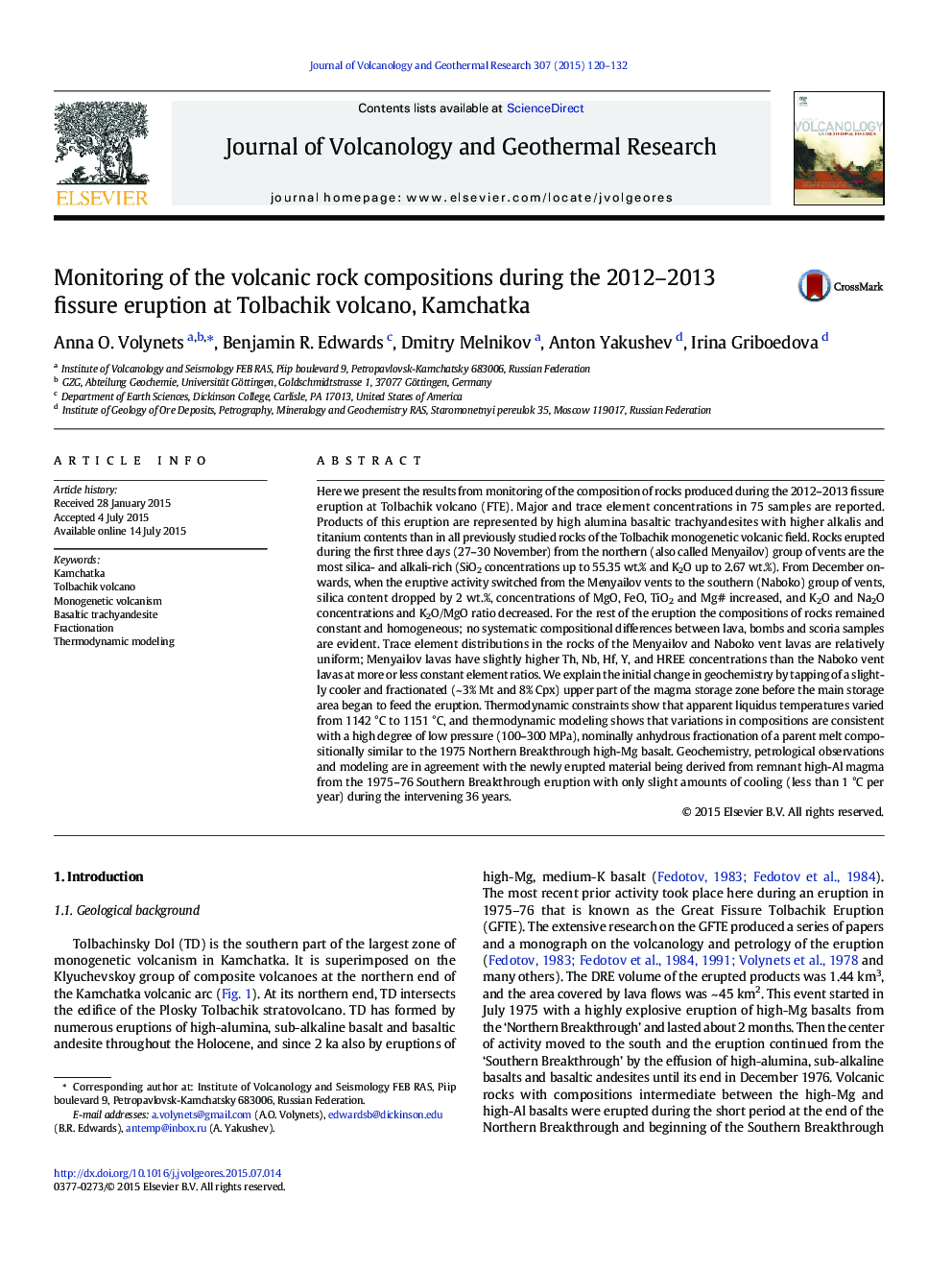| کد مقاله | کد نشریه | سال انتشار | مقاله انگلیسی | نسخه تمام متن |
|---|---|---|---|---|
| 6439632 | 1638315 | 2015 | 13 صفحه PDF | دانلود رایگان |

- We present a set of lava compositions spanning the 2012-13 Tolbachik fissure eruption.
- We document a major compositional change after the first three days of eruption.
- From the mid December until the end of eruption lava compositions remained constant.
- High alumina basaltic trachyandesites with high alkalis and Ti content were erupted.
- Petrological modeling shows that high-Al 1975-6 and new lavas are genetically related.
Here we present the results from monitoring of the composition of rocks produced during the 2012-2013 fissure eruption at Tolbachik volcano (FTE). Major and trace element concentrations in 75 samples are reported. Products of this eruption are represented by high alumina basaltic trachyandesites with higher alkalis and titanium contents than in all previously studied rocks of the Tolbachik monogenetic volcanic field. Rocks erupted during the first three days (27-30 November) from the northern (also called Menyailov) group of vents are the most silica- and alkali-rich (SiO2 concentrations up to 55.35 wt.% and K2O up to 2.67 wt.%). From December onwards, when the eruptive activity switched from the Menyailov vents to the southern (Naboko) group of vents, silica content dropped by 2 wt.%, concentrations of MgO, FeO, TiO2 and Mg# increased, and K2O and Na2O concentrations and K2O/MgO ratio decreased. For the rest of the eruption the compositions of rocks remained constant and homogeneous; no systematic compositional differences between lava, bombs and scoria samples are evident. Trace element distributions in the rocks of the Menyailov and Naboko vent lavas are relatively uniform; Menyailov lavas have slightly higher Th, Nb, Hf, Y, and HREE concentrations than the Naboko vent lavas at more or less constant element ratios. We explain the initial change in geochemistry by tapping of a slightly cooler and fractionated (~ 3% Mt and 8% Cpx) upper part of the magma storage zone before the main storage area began to feed the eruption. Thermodynamic constraints show that apparent liquidus temperatures varied from 1142 °C to 1151 °C, and thermodynamic modeling shows that variations in compositions are consistent with a high degree of low pressure (100-300 MPa), nominally anhydrous fractionation of a parent melt compositionally similar to the 1975 Northern Breakthrough high-Mg basalt. Geochemistry, petrological observations and modeling are in agreement with the newly erupted material being derived from remnant high-Al magma from the 1975-76 Southern Breakthrough eruption with only slight amounts of cooling (less than 1 °C per year) during the intervening 36 years.
Journal: Journal of Volcanology and Geothermal Research - Volume 307, 1 December 2015, Pages 120-132